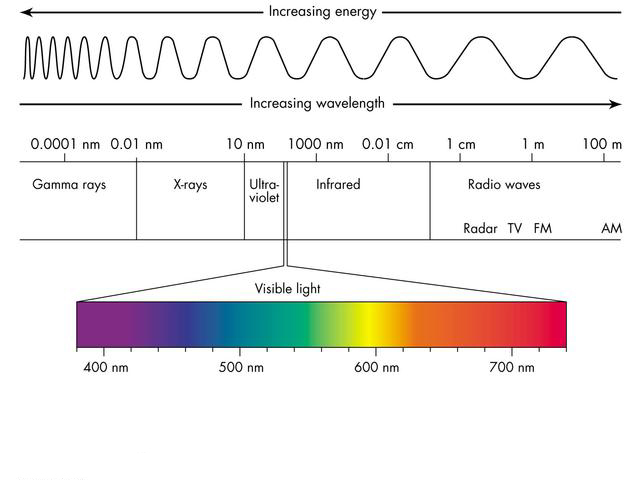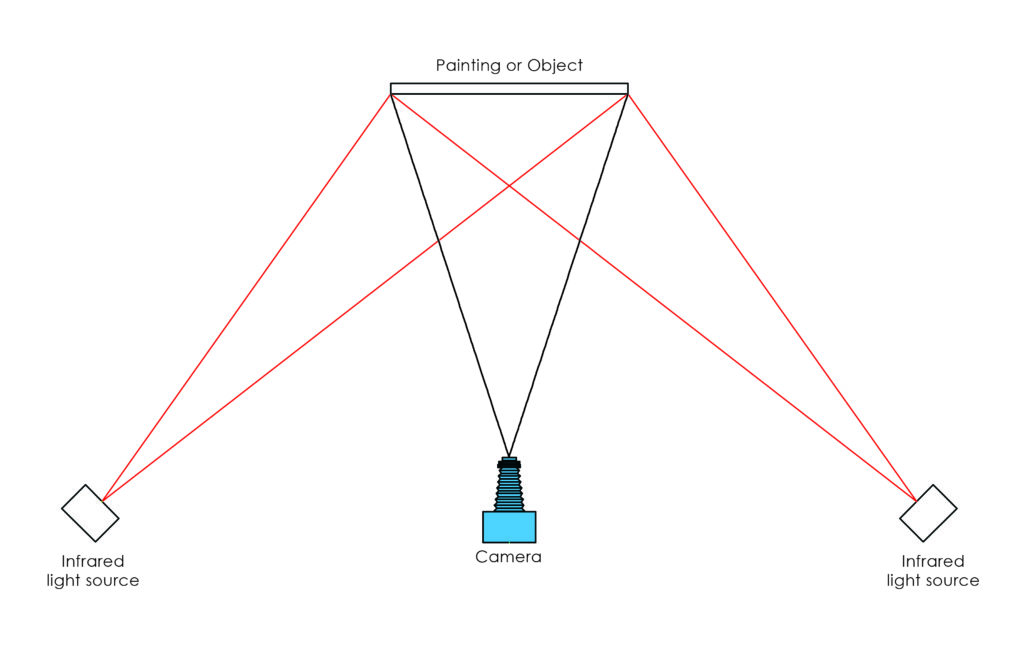
The electromagnetic spectrum
The ‘reflect’ element of reflectography refers to the reflection of a light source from the ground beneath a painting. It is particularly effective when a painting features a white or light-coloured background, with an underdrawing or preliminary sketch executed in a carbon-rich material such as charcoal or bone black.
Some of the incident infrared light is absorbed by the carbon-rich material that makes up the underdrawing. The rest is simply reflected back towards the camera. This is what generates the contrast in the image.
The obvious problem is that both underdrawing and background are covered with layers of paint. Paint pigments are generally designed to be opaque to light in the visible part of the spectrum, but they are often increasingly transparent to light at longer wavelengths.
When visible light is used to illuminate a painting, the absorption and scattering by the paint layers is generally so high that the paint is all we actually see. Very little light reaches the background, and that which does is subject to further scattering and absorption on its way back.
By shining an infrared light source (such as a Tungsten Halogen bulb) at a painting and recording the light reflected back, we can see through the paint and study otherwise invisible elements of the painting and its composition.
